Main content
Top content
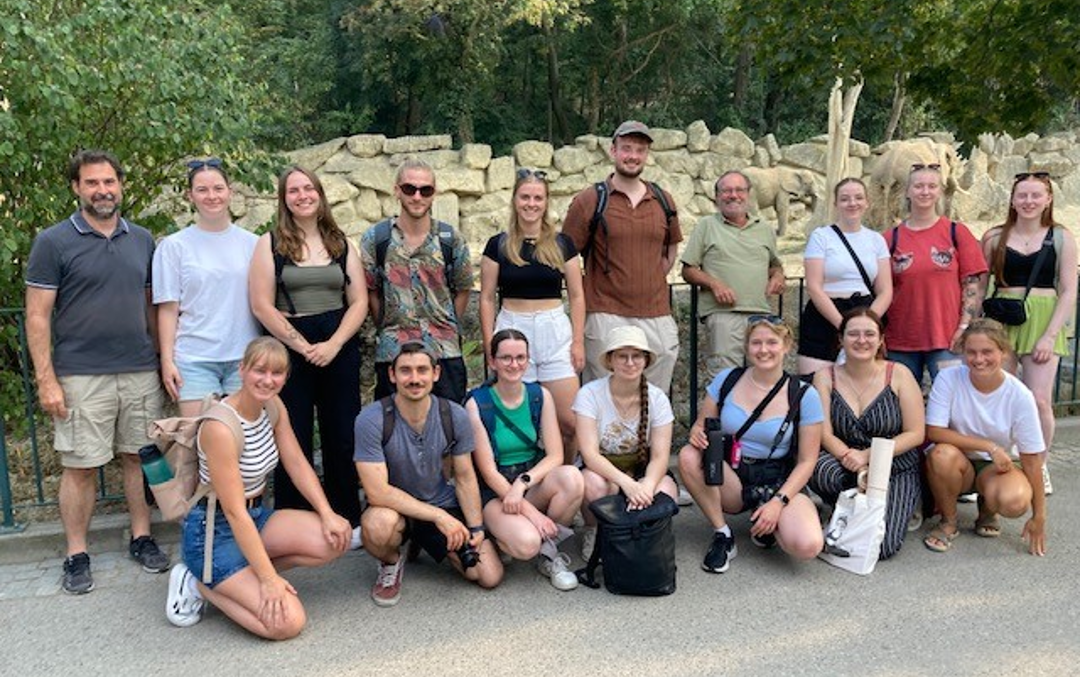
Group photo in front of the elephant enclosure at the Schönbrunn Zoo (Photo: RG Behavioural Biology | Osnabrück University)
Excursion to the oldest zoo in the world: What does species-appropriate animal husbandry look like, and how can it be ensured?
12.11.2024
Under the guiding theme "Modern Animal Husbandry Concepts”, a three-day excursion organized by the Behavioural Biology research group (led by Prof. Dr. Chadi Touma) took place in September. The program included visits to the Schönbrunn Zoo – the oldest zoo in the world – as well as to the Research Institute for Wildlife Ecology and Wildlife Management at the University of Veterinary Medicine Vienna.
In early September 2024, 15 biology students, accompanied by Prof. Dr. Chadi Touma and Prof. Dr. Michael Böer, embarked on a behavioural biology excursion to Vienna. Under the guiding theme "Modern Animal Husbandry Concepts", they visited the historic Schönbrunn Zoo and the renowned Research Institute for Wildlife Ecology and Wildlife Management (FIWI) at the University of Veterinary Medicine Vienna. The goal of the trip was to experience modern approaches to animal husbandry first-hand and to explore topics such as species conservation, animal welfare, and the educational role of zoos and scientific institutions.
To prepare for the excursion, an intensive seminar took place a week prior, where discussions focused on themes including "Ethical Controversies in Zoo Animal Husbandry", "Conservation in Zoological Gardens", "Assessment of Animal Welfare", as well as "Environmental Enrichment" and "Research and Education in Zoos." From September 3rd to September 5th, the group spent two days at Schönbrunn Zoo and one day at the FIWI, gaining deeper insights and practical experiences on the aforementioned topics.
The following report by two participants provides an impression of the exciting insights the group encountered during the excursion.
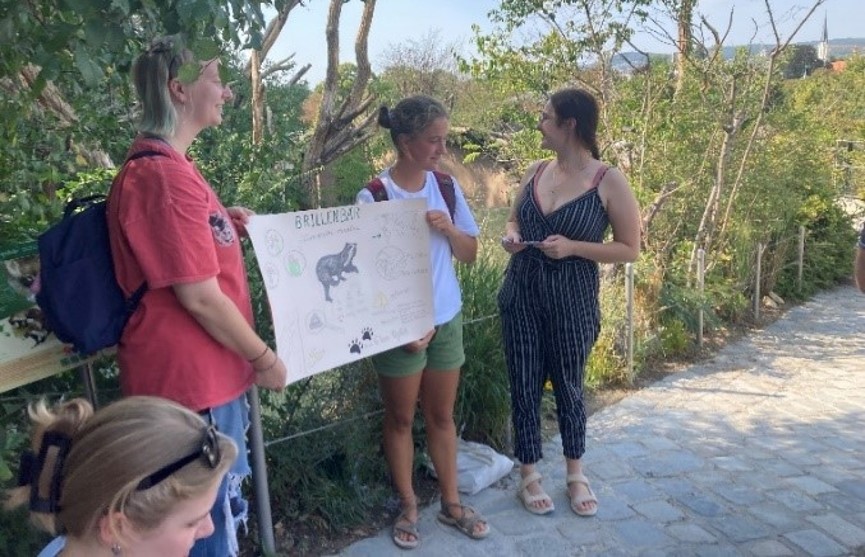
Species profile presentation on the endangered spectacled bear (Photo: Emily Mundt)
Day 1: Arrival and Experience
After a long journey marked by delays from the night train, we finally arrived in Vienna on September 3rd. The late summer heat of 34°C was quite challenging for us. After a brief pause and some refreshments at the hotel, we took the subway to Schönbrunn Zoo, the oldest zoo in the world. Our visiting time was shorter than initially planned due to the delays, but in the time we had left, we began to explore the fascinating world of the zoo: from the design of the enclosures to the animal inhabitants. Some students presented short lectures on endangered species residing in the zoo, providing us with a first taste of what was still to come.
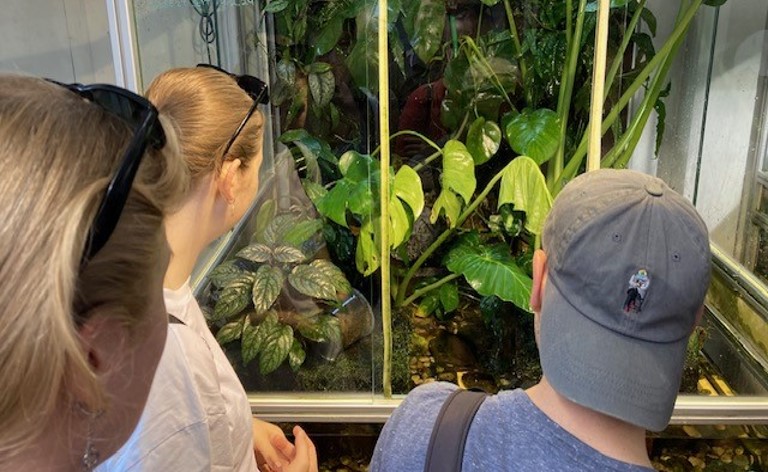
The students are on the lookout for the characteristic waving of the waving frogs (Photo: Chadi Touma)
Day 2: Behind the Scenes
On the second day, we experienced a highlight of the trip: we were allowed to go behind the scenes of the elephant house and observe the training of these majestic animals. It was impressive to see how the massive elephants performed their exercises with enthusiasm and precision. The training serves both as mental stimulation and as a means of conducting medical health checks on the gentle giants. The zookeepers explained the specifics and methods of the training, providing us with fascinating insights into the lives and behaviours of the African elephants housed in the zoo.
Afterward, we had the opportunity to engage in an open Q&A session with experts from various departments of the zoo. Here, we learned a lot about conservation projects, animal welfare and the important educational work carried out at Schönbrunn Zoo. It was inspiring to see how scientific studies are conducted in the zoo and directly applied in practice. To cool off, we enjoyed a refreshing ice cream – a welcome relief from the continued summer heat. The rest of the day was ours to further explore the zoo and continue presenting our species profiles.
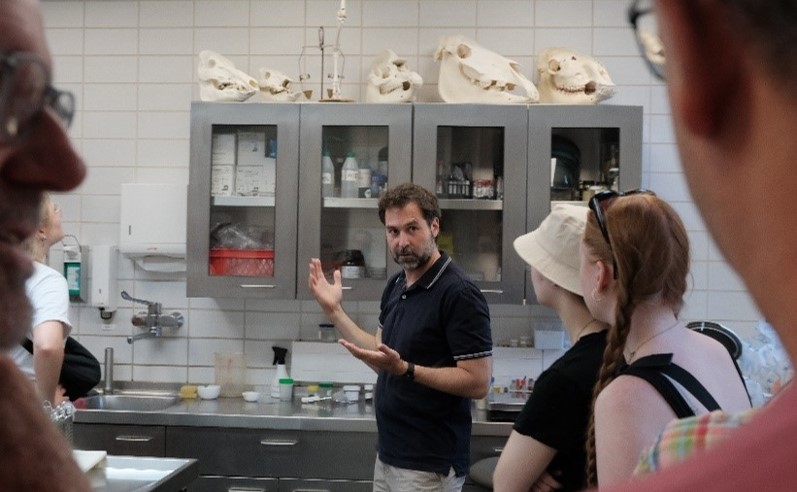
Identification of the animal species based on the skull in the pathology department of the FIWI (Photo: Fabian Lübken)
Day 3: Science Up Close
The third day of the excursion took us to the FIWI, the Research Institute for Wildlife Ecology and Wildlife Management. There, we were greeted by Professor Anna Kübber-Heiss, the institute's pathologist, who provided us with an impressive tour of the pathology department. She enthusiastically shared details about her work, including many exciting and unusual cases. Particularly fascinating was the examination of various extracted parasites, including the fox tapeworm – harmless to foxes, but potentially life-threatening to other animals and humans.
Next, we proceeded to the laboratories and outdoor facilities of the institute, where we gained impressive insights into the care of animals in research institutions, from aquariums with tropical fish to terrariums with poison dart frogs. However, the highlights of the day were the encounters with the red deer, which, due to being hand-reared, were particularly trusting and provided the students with unforgettable moments. Not only could we get up close and even touch the animals, but we also learned exciting details about these native wildlife species through direct contact.
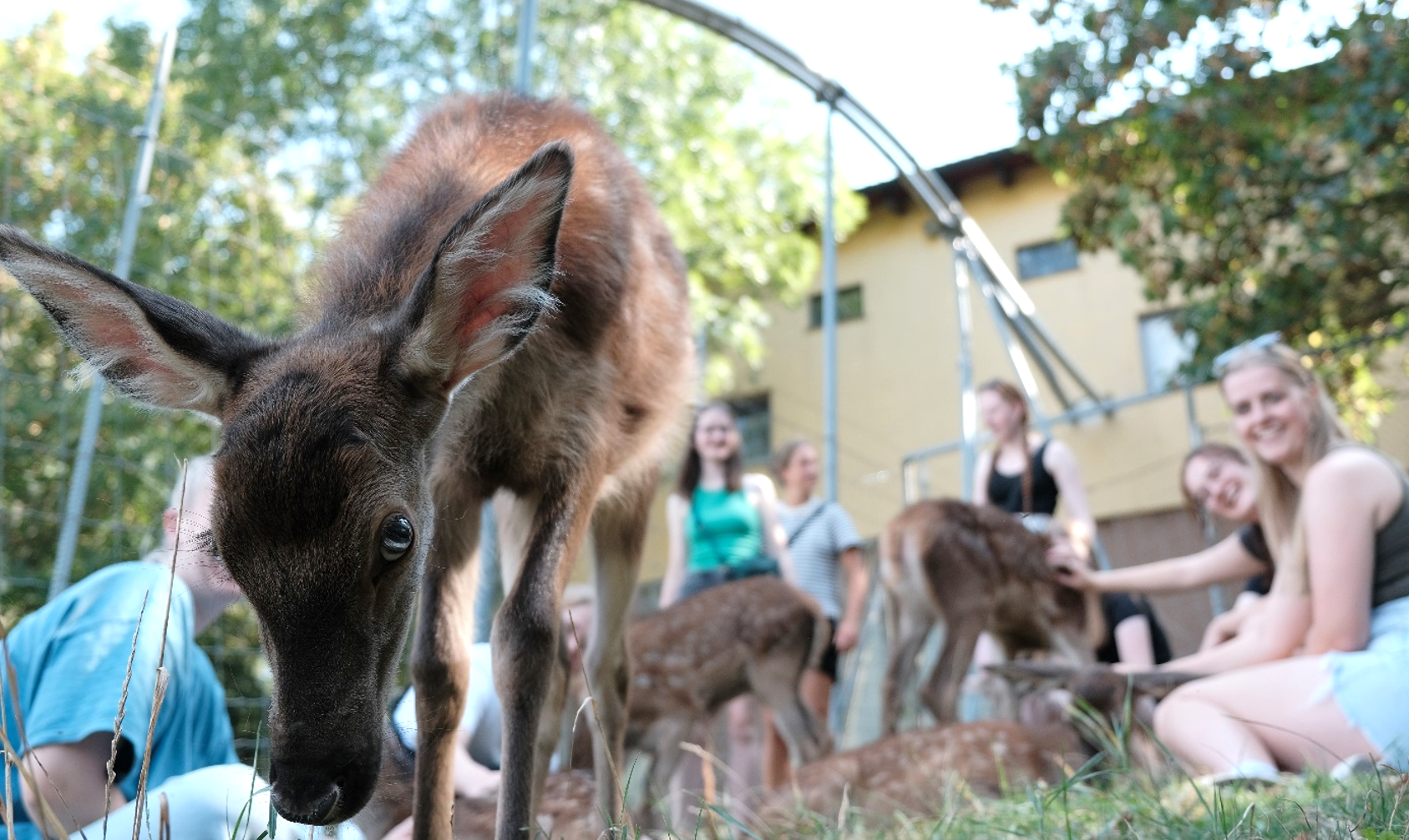
The hand-tamed red deer calves were not at all shy of the cameras! (Photo: Fabian Lübken)
After lunch, we deepened our knowledge through lectures and discussions with researchers from the University of Veterinary Medicine Vienna. For instance, Professor Rupert Palme explained his research on measuring stress in animal excretions (e.g., faeces and urine), a non-invasive method that can replace blood sampling, making it safer for both the animals and the involved researchers. Following that, Professor Franz Schwarzenberger provided fascinating insights into hormonal processes and the monitoring of oestrous cycles and pregnancy in wildlife.
Conclusion: Enriching Experiences and New Perspektives
After these three exciting days, we began our journey home on the night train, which thankfully ran on schedule this time and brought us back to Osnabrück punctually. The experiences at Schönbrunn Zoo and the FIWI not only provided us with valuable insights into modern animal husbandry and research but also encouraged us to critically question these practices. The openness and expertise of the researchers, along with the opportunity to discuss our own species profiles and observations, inspired us and opened new perspectives. We are grateful to have been part of this excursion and recommend it to anyone passionate about these topics!
Report by: Hannah Kathmann and Julia Bender







